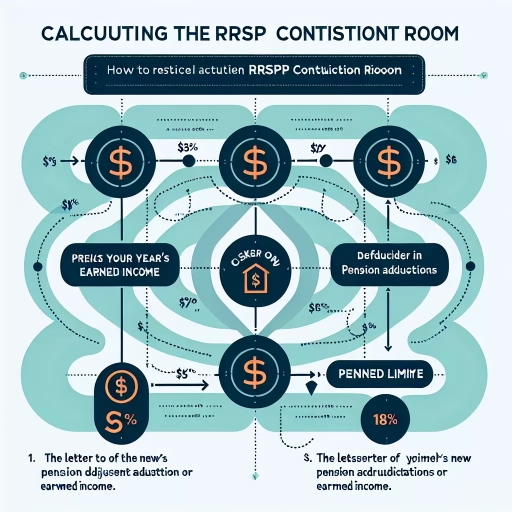How Is Rrsp Contribution Room Calculated

Understanding RRSPs and the Basics of Contribution Room
1. What is an RRSP?
The Registered Retirement Savings Plan (RRSP) is a government-approved account aimed at encouraging Canadians to save for their retirement. Administered by the Canada Revenue Agency (CRA), the primary benefit of RRSPs is their tax-deferred nature, which lets eligible contribution amounts to be deducted from your income - reducing the amount of income tax you owe. This unique quality makes RRSPs an attractive investment vehicle for Canadians looking towards securing a comfortable post-retirement future.
2. What is Contribution Room?
In the context of RRSPs, contribution room refers to the maximum amount an individual is permitted to deposit into their RRSP in a given tax year. The CRA sets this limit and it varies depending on a number of factors, including your reported earned income, unused contribution room from previous years, and pension adjustments. This mechanism prevents over-contributions and maintains fairness in the tax system.
3. Why Understanding Your RRSP Contribution Room is Important?
Understanding how your RRSP contribution room is calculated is critical since any amount you contribute above your limit could incur a penalty tax of 1% per month on the excess amount. Also, optimising your contributions can allow for maximum tax deductions. It's therefore essential to be aware of your RRSP contribution room each year in order to effectively strategize and maximize the benefits of your RRSP investments.
How is the RRSP Contribution Room Calculated?
1. Calculating Based on Earned Income
Your RRSP contribution room for the current tax year is primarily based on 18% of your earned income (such as salary, self-employment income, rental income, etc.) reported on your income tax return from the previous year. It's important to include all income sources to ensure an accurate calculation of your contribution room.
2. Factoring in Your Unused RRSP Contribution Room
The CRA allows for unused RRSP contribution room from previous years to be carried forward indefinitely. This means that if you don't max out your RRSP contributions in a given year, that unutilized room gets added to your total contribution limit for the following years. Hence, tracking and understanding this accumulated unused space can significantly increase your RRSP savings potential.
3. Considering Pension Adjustments
Pension adjustments (PAs) also play a vital role in calculating your RRSP contribution room. If you're a participant in a Registered Pension Plan (RPP) or a Deferred Profit Sharing Plan (DPSP), the amount of your PA reduces the RRSP contribution room for the following year. Your PA represents the value of the pension benefits accumulating in your employer-sponsored plan and aims to provide an equal tax-deferral opportunity for all savers.
Using Digital Tools and Expert Guidance to Maximise RRSP Contributions
1. The Advantages of Digital Tools
Tools like online RRSP calculators can help predict your contribution room and the potential tax savings. They take in your income details, pension adjustments, and previous unused room to provide an accurate estimate of your contribution limit, thereby aiding in making informed decisions about your investment.
2. Importance of Professional Financial Advice
Hiring a financial advisor is crucial for sophisticated financial planning. They provide expert insights on RRSP contribution strategies based on your financial goals and risk tolerance. This advice can be instrumental in ensuring you maximise your RRSP contributions without incurring any penalty tax.
3. Importance of Periodic Portfolio Review
A periodic review of your RRSP investment performance is essential in assessing if you are on the right track towards achieving your retirement goals. Adjusting your RRSP contribution in line with changes in your income, market conditions, and personal circumstances can help in optimally managing your retirement savings.